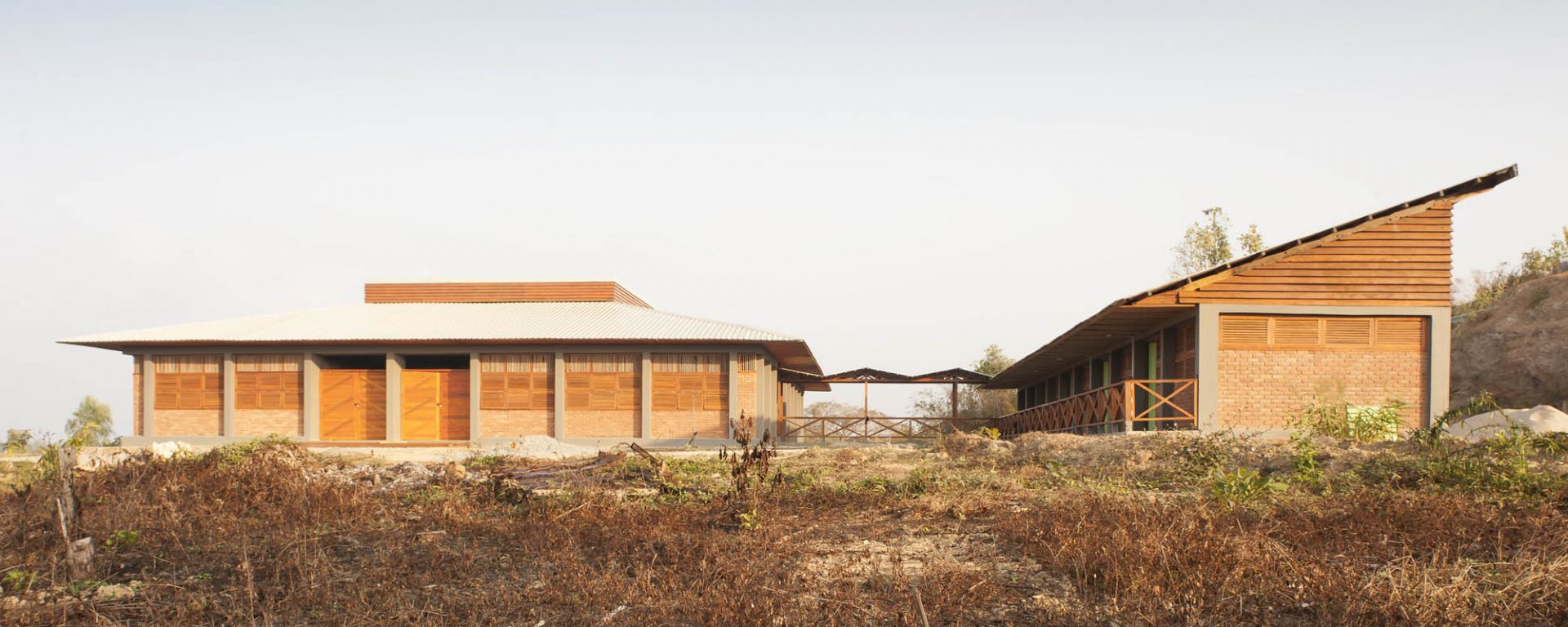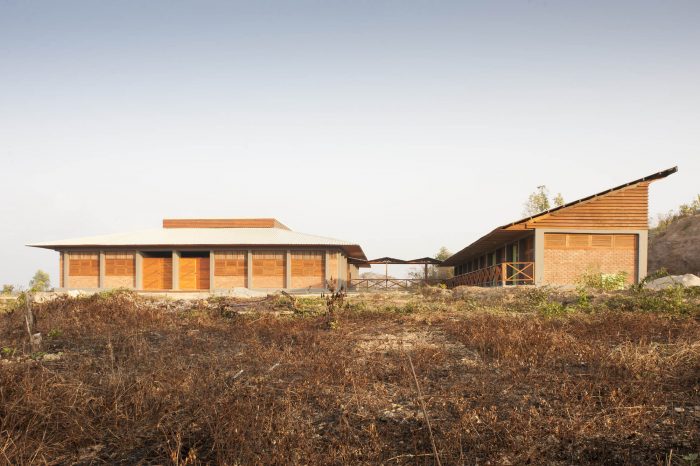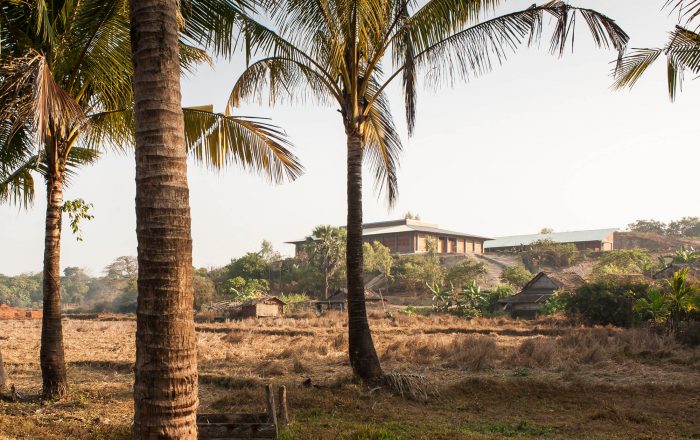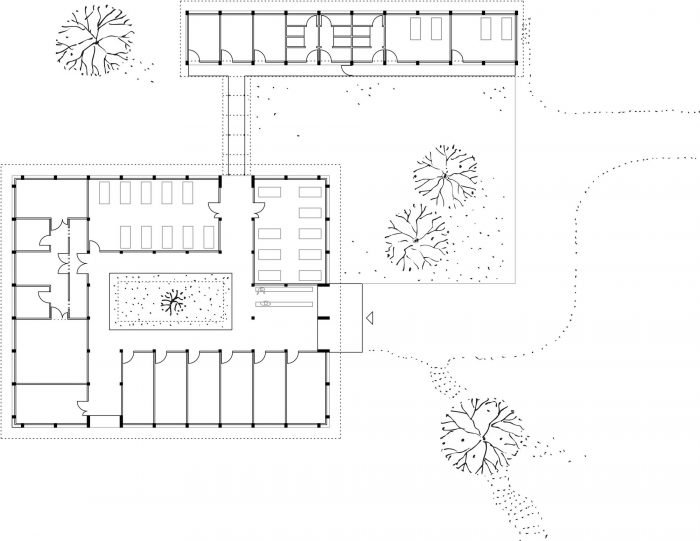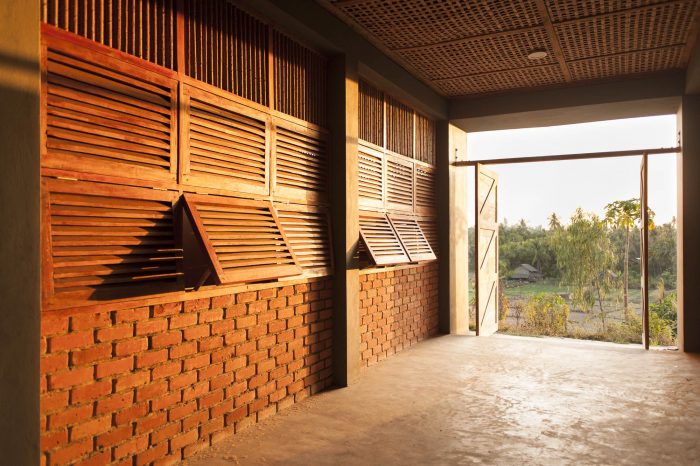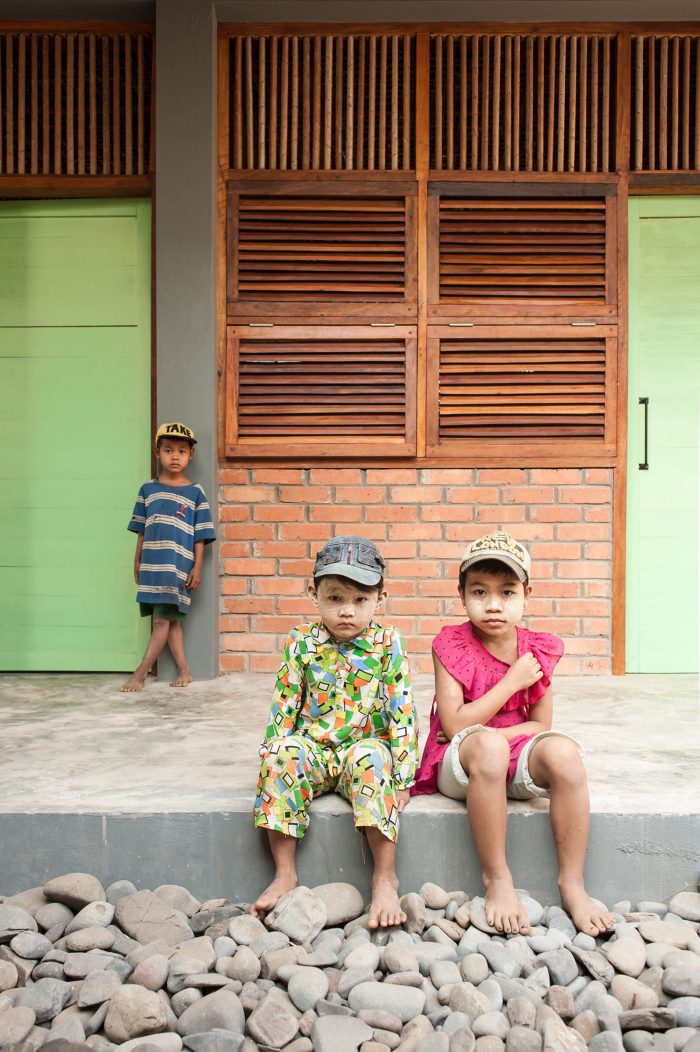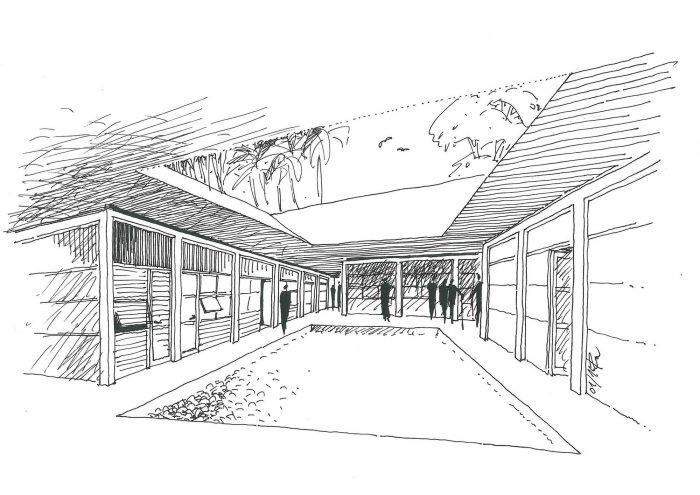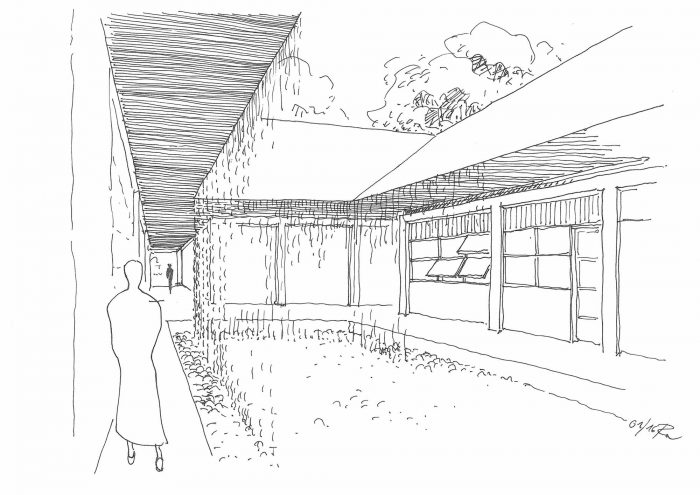非政府组织和注册协会Projekt Burma e. V.为自己设定的目标是改善缅甸受贫困影响的人们的生活条件。Marion Mück于2009年在斯图加特附近的Filderstadt成立了这个协会,其座右铭是 “助人自助”。缅甸项目与当地合作伙伴合作,已经在教育、健康、水、卫生和防灾领域实现了各种项目。其中之一是2014年在Thazin开设的高中。这所学校是a+r Architekten公司受非政府组织委托设计的第一座建筑,并有机会在现场协助实施。
The non-governmental organisation and registered association Projekt Burma e. V. has set itself the goal of improving the living conditions of people affected by poverty in Myanmar. “Helping people to help themselves” is the motto of the association, which Marion Mück founded in Filderstadt near Stuttgart in 2009. Projekt Burma in cooperation with local partners has already realised various projects in the areas of education, health, water, hygiene and disaster prevention. One of them is the high school in Thazin, which was opened in 2014. The school is the first building that a+r Architekten designed by order of the NGO and had the opportunity to assist in the implementation on site.
获得医疗服务的机会不多。在Thazin高中的开幕式上,Magyizin村的村长和两名社区成员找到了协会。他们坐了六个小时的渔船,亲自来请求帮助。他们强调了他们在医疗方面的困境。他们现有的保健中心已经破旧不堪,设备不足。最近的医院离这里有三个多小时的路程,对于重病患者或重度孕妇来说,这个距离是不合理的。实地考察后,协会董事会决定将建设医院作为下一个合作项目。
Inadequate access to health care. At the opening of the high school in Thazin, the mayor and two community members of the Magyizin village approached the association. They had travelled six hours by fishing boat to personally ask for help. They emphatically described their plight in terms of medical care. Their existing health centre was dilapidated and inadequately equipped. The nearest hospital was over three hours away by moped, an unreasonable distance for seriously ill or heavily pregnant women. After the on-site visit, the board of the association decided that the construction of a hospital should be the next joint project.
全面的房间安排。经过近五年紧张的规划、筹款、材料采购和施工,医院于2020年2月正式开业。该医院有20张床位,一个设备齐全的手术室,一个产房和一个实验室,现在作为中心医院为大约20个社区和20,000人服务。在Projekt Burma e.V.的倡议下,医院的大部分设备通过集装箱从德国运来,这些设备都是由德国机构和医生捐赠的。
Comprehensive room schedule. After almost five intensive years of planning, fundraising, material procurement and construction, the hospital was officially opened in February 2020. With 20 beds, a fully equipped operating theatre, a delivery room and a laboratory, it now serves around 20 communities and 20,000 people as a central hospital. The majority of the hospital equipment arrived by container from Germany on the initiative of Projekt Burma e.V., where it had been donated by German institutions and doctors.
村庄一侧远离大海的一座小山被选为新建筑的地点。由于位置较高,该建筑在热带风暴和海啸期间也是安全的避难所。a+r Architekten开发了一个单层的中庭房屋,作为主楼。遮蔽的内院是该建筑的核心;它既是一个休息区,也是一个公共空间。围绕它的是病人房间、治疗和工作人员房间以及药房。为了最大限度地减少疾病的传播,等候区设在室外。具有独特的单坡屋顶的直线型侧翼通过一个凉棚进入。它容纳了一个隔离病房,并为传染病人提供了额外的房间,还有厨房–用于自炊,这在缅甸很常见–以及储藏室、盥洗室和卫生设施。
A hill on the side of the village facing away from the sea was chosen as the location for the new building. Thanks to its elevated position, the building also serves as safe refuge during tropical storms and tsunamis. a+r Architekten developed a single-storey atrium house that serves as the main building. The sheltered inner courtyard is the heart of the building; it is both a lounge area and a communal space. Grouped around it are the patient rooms, the treatment and staff rooms, and the dispensary. To minimise the transmission of diseases, the waiting area is located outdoors. The linear side wing with its distinctive mono-pitch roof is accessed via a pergola. It houses an isolation ward with additional rooms for infectious patients, kitchens — for self-catering, which is common in Myanmar — along with storage rooms, washrooms and sanitary facilities.
受到当地建筑方法的启发。在全国各地旅行时,建筑师们研究了传统的建筑方法。与塔津的高中一样,他们根据该国典型的 “砖砌结构 “来设计医院,使用骨架结构和砖块填充。在医院的情况下,支撑骨架是由钢筋混凝土制成的,以实现更大的稳定性并防止虫害。建筑上引人注目的特点是由木板条制成的可移动的遮阳和防雨元件,以及中庭房屋的屋顶结构及其全方位的檐顶。两者结合在一起,也确保了持续的通风–在热带气候下建造时的主要问题之一。由木质桁架制成的天花板结构的底部主要由编织的竹席覆盖。这样一来,气流通过遮阳折叠百叶窗后面的开窗,向上穿过竹格子,再通过屋脊上的通风百叶窗回到外面,形成循环。项目建筑师Julia Raff说:”建筑中到处都有令人愉快的通风,”他解释了交叉通风这一简单而有效的基本原则。由于该地区没有建筑公司,该建筑主要是由村民在一名木匠的指导下搭建起来的。
Inspired by local building methods. While travelling around the country, the architects had studied the traditional construction methods. As with the high school in Thazin, they designed the hospital according to the country’s typical “brick nogging structure”, using a skeleton construction with brick infill. In the case of the hospital, the supporting skeleton was made of reinforced concrete to achieve greater stability and to protect against insect infestation. Architecturally striking features are the movable shading and rain protection elements made of wooden slats and the roof construction of the atrium house with its all-round gable top. In combination, both also ensure constant ventilation — one of the major issues when building in a tropical climate. The underside of the ceiling structure made of timber trusses was largely covered with weaved bamboo mats. In this way, the air flow circulates through the open windows behind the shading folding shutters, upwards through the bamboo lattice and back out again via ventilation louvres in the ridge of the gable top. “There is a pleasant draught everywhere in the building,” says Julia Raff, the project architect, explaining the simple but effective basic principle of cross-ventilation. Since there are no construction companies in the area, the building was largely erected by villagers under the guidance of a carpenter.
这个地方正在发展。村民们也积极参加了医院的建设,该医院的正式名称是缅甸项目医院。例如,他们在海滩上收集石头,用来铺设内院的中央盆地。在下大雨的时候,水可以通过这个表面以可控的方式排出去。几年后,盆地中间的一棵树苗将提供额外的阴凉。在建设新医院的过程中,缅甸政府还为医生和护理人员资助了一所房子。因此,Magyizin村正在发展成为整个地区的卫生中心。在冠状病毒大流行期间,该医院还被用作官方检疫中心。自从缅甸最近爆发政治动乱以来,许多人,主要是在抗议活动中受伤的年轻人都在缅甸医院接受了治疗。
The location is developing. The villagers also actively participated in the construction of the hospital, which is officially called Project Burma Hospital. For example, they collected stones on the beach to line the central basin in the inner courtyard. In case of heavy rainfall, water can be drained off in a controlled manner via this surface. In a few years, a sapling tree in the middle of the basin will provide additional shade. In the course of building the new hospital, the Myanmar government additionally funded a house for doctors and nursing staff. Thus, the village of Magyizin is developing into a health centre for the entire region. During the Corona pandemic, the hospital is also used as an official quarantine centre. Since the outbreak of the recent political unrest in Myanmar, many, mostly young people injured in the protests have been treated at the Burma Hospital.
Architects: a+r ARCHITEKTEN
Area: 515 m²
Year: 2020
Photographs: Oliver Gerhartz
Client :Projekt Burma e. V.
Site Project Management :Projekt Burma e. V.
City:Magyizin
Country:Myanmar

